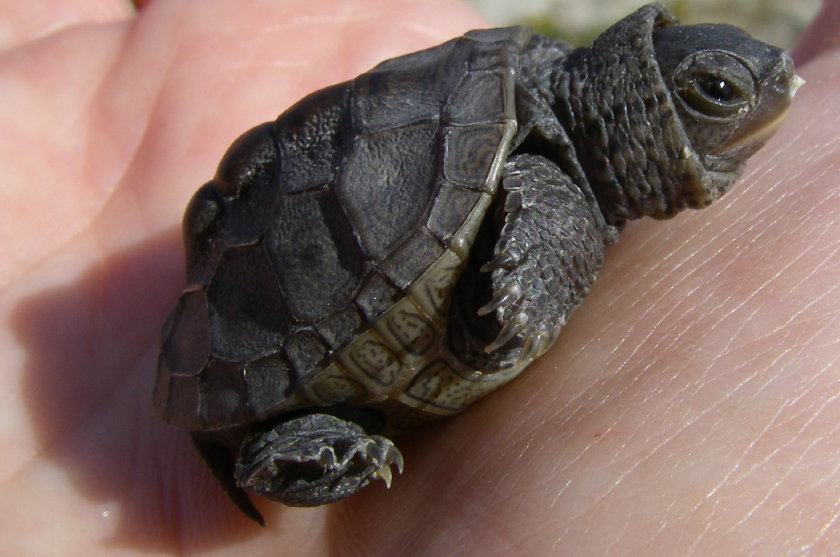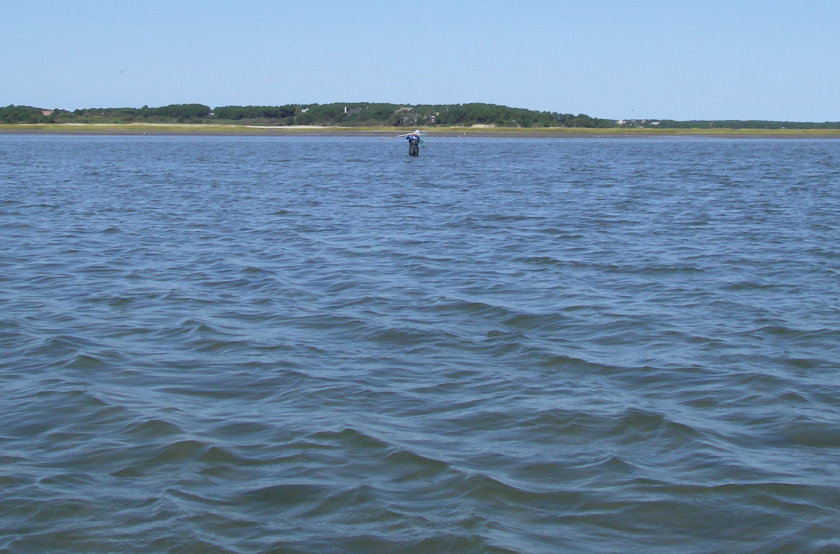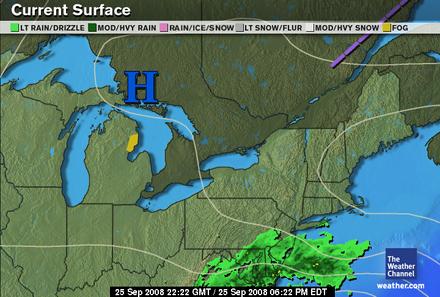October 8th is late … very late in the season for diamondback terrapin hatchlings to emerge in the Great White North. Yet, this morning as we walked along a dirt road between salt marsh on the south and rolling dunes to the north, we spotted a fresh set of hatchling tracks slaloming across the white sand. The tracks began atop one dune, slipped down slope and then climbed up the next dune immediately adjacent to the roadway. We began to follow the track with camera in hand.
Click Here to View Video in High Quality
Following the Tracks of a Diamondback Terrapin Hatchling
The previous video retraces the tracks in 45 seconds but the hatchling would have taken more than 45 minutes to create them. We found this perfect little terrapin resting under a clump of beach grass. It sported an extremely sharp egg tooth and a slight yolk sac remnant.
Last 2008 Hatchling Sports Sharp Egg Tooth
It seemed a bit lethargic in the cool weather, but warmed a bit as it basked on the sun baked sand. Still, after we moved it across the roadway to reduce the chance of an unfortunate accident with vehicular traffic, the terrapin held its position for several minutes before taking a deep breath and venturing into hiding within the nursery marsh.
Click Here to View Video in High Quality
Release into the Wild Elicits a Deep Yawn
If this hatchling proves the last of the year, as is most likely, it certainly wrote a wonderful punctuation mark on the 2008 field season.




